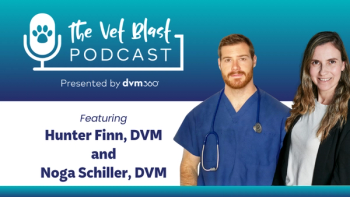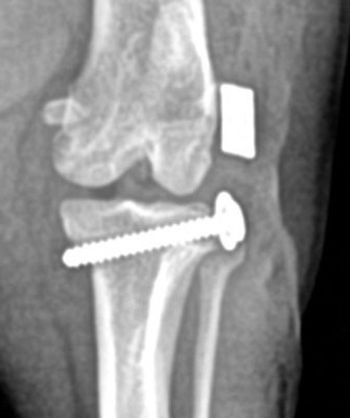
- dvm360 November 2021
- Volume 52
Product comparison in an unregulated industry: Hemp
As new veterinary CBD products continue to flood the market, understanding what they contain vs what is on the label can be daunting. Fortunately, with a little online legwork, clinicians can arm themselves with objective product information.
As veterinary professionals, we have been using nutraceuticals and supplements forever. These products are intended to support (not treat) a function of the body or to promote healthy function of a particular physiologic system. There are many legal nuances that we must be aware of when using these products—so many that it is beyond the scope of this article to discuss them all.
Every year it seems we are introduced to another nutraceutical or supplement and are essentially left to fend for ourselves regarding the quality, efficacy, and proven dosing of these products. Unless you have been living under a rock, you likely have heard of or have had clients ask about a new “wonder” molecule known as cannabidiol (CBD). The fact is that CBD is only 1 of hundreds of molecules known as phytocannabinoids that are produced by both hemp and marijuana plants. However, it is important to understand the difference between hemp products and marijuana. Hemp products contain less than 0.3% Δ-9-tetrahydrocannabinol (THC; the main intoxicating compound in marijuana) and are widely available and legal in many states. Marijuana, on the other hand, is still illegal federally despite varying legal status’ at the state level. We also must be aware of another set of pharmacologically active molecules known as terpenes that can also be found in these products. Terpenes are aromatic molecules that deliver the classic aroma of hemp and marijuana and may also contribute to product efficacy.
Both hemp and marijuana are hot topics in the field of veterinary nutraceuticals/supplements, with many platforms offering continuing education on the topic. However, many fall short in helping practitioners with choosing a safe, effective and an economical product. With so many choices available at legal recreational dispensaries for marijuana products, to gasoline stations, online vendors, and now sales representatives hitting our clinics, the decision-making can be mind-boggling!
The first step in educating ourselves and helping our patients is knowing what is in these products. This can be achieved by locating a certificate of analysis (COA) by a third-party ISO/IEC 17025 certified laboratory by either directly contacting the company or by perusing a manufacturers website. Certification with the ISO (International Organization for Standardization) means the company has had its product analyzed to guarantee it contains what the company says it contains.
Myself and many colleagues familiar with cannabinoid containing products often say, “If the company is unwilling to give you a COA, walk away.” I take this to heart because this is one of the only ways to arm ourselves against poor-quality products until the United States Food and Drug Administration releases guidelines regarding cannabinoid-containing products' development and use. There is much information that should be included in a COA, including the cannabinoid levels in mg/mL format to help dose and determine the cost per mg. It also should provide information about what terpenes are present in the product and their concentration and whether there are contaminants such as residual solvents, bacteria, or mycotoxins. Finally, the COA should contain an elemental analysis looking for things like heavy metals. To see what a COA should look like visit, www.vetcannacademy.com.
Although a COA is not a silver bullet, it does beg the question, “Should we be asking for a COA for all of our supplement and nutraceutical products in house?” The answer is probably yes. Aside from a COA, it might also be best to consider using products, not just CBD, with clinical efficacy data, pharmacokinetics data, and safety studies. It is time that we, as the community of individuals selling these types of products, demand better science before carrying them in our practices.
Recently, I helped with a veterinary CBD product study1 that illuminated the differences in product formulations and the ways in which some companies may deceive us. We found most products did not match what is on the label, with some having less CBD than what is claimed on the bottle and others containing more CBD than what was claimed. We also found heavy metal contaminants in some of the products, with one surpassing what is considered safe by the USP.
If you decide to carry hemp products in your practice, please consider some of the standards of how to assess these products. Your clients, patients, and licensure will thank you.
Reference
- Wakshlag JJ, Cital S, Eaton SJ, Prussin R, Hudalla C. Cannabinoid, terpene, and heavy metal analysis of 29 over-the-counter commercial veterinary hemp supplements. Vet Med (Auckl). 2020;11:45-55. doi:10.2147/VMRR.S248712
Articles in this issue
about 4 years ago
National Pet Diabetes Month: Raising awareness and making stridesabout 4 years ago
A breakthrough joint supplement for dogs and catsabout 4 years ago
Dental Pain and Inflammation—Acute and Chronicabout 4 years ago
Veterinary technicians embrace their rolesabout 4 years ago
Understanding and diagnosing canine hypothyroidismover 4 years ago
Embark Veterinary releases first-ever purebred dog DNA kitover 4 years ago
Zoetis adds digital cytology testing to Vetscan ImagystNewsletter
From exam room tips to practice management insights, get trusted veterinary news delivered straight to your inbox—subscribe to dvm360.




